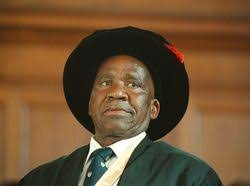This is an excerpt of a paper on Barnard’s legacy in South Africa and my own implication in that legacy. (Part 3/4)
In this paper, I tell the stories of Barnard, Hamilton Naki, Basil Brown, three South Africans whose stories can tell us much about legacy, celebrated legacy, disputed legacy, fraught legacy, enduring legacy.
The Story of Hamilton Naki
There remains much confusion around the role of Hamilton Naki in the first human-to-human heart transplant. This is my view.
In the 1960s and 1970s, Hamilton Naki became a key member of the animal laboratory, an essential team in the UCT cardiac unit’s research programme in the lead-up to the first transplant.
Unfortunately for Naki and the historical record, Barnard’s first public utterances about Naki bordered on hyperbole, noting that Naki was one of the great researchers of all time in the field of heart transplants, had better technical surgical skills than himself and that he would have become a brilliant surgeon if apartheid had not got in the way.
Various publications, from the New York Times to the British medical journal The Lancet, aided by a documentary, Hidden Heart, reported that Naki had played an important role in the first human-to-human heart transplant; “his team” had systematically removed donor Denise Darvall’s heart, washed and perfused it before passing it to Barnard in the theatre next door to place in Washkansky’s empty chest.
The reality is that apartheid got in the way of that story – formalised legal apartheid such as restrictions on the kind of jobs which black people could do, the places they could access (including whites only surgical theatres). But, also the informal, perhaps more insidious apartheid of how white people related to black people even when there was no law which determined how they should interact, would have got in the way.
Naki came into the research complex as a gardener but eventually spent 50 years working as a laboratory technician. There is no doubt that the academic value of his work was far-reaching. He would also have played a role in teaching medical students incision and other surgical techniques which maximised the research outcomes they were pursuing.
There are many accounts of Chris Barnard, the human being, doctor, surgeon. Many of those accounts differ about the kind of person Barnard was, but there are also sufficient areas of agreement and corroboration across accounts. Some aspects are unequivocal. These are that Barnard had a vision, was strongly driven to succeed, had enormous courage, believed in himself and had an ego comparable to the size of the Cape Town soccer stadium. He was also in charge of his team, a fact which related to his formal authority within the hospital-university complex but also reflected his own ability to arrogate to himself leadership authority even when it was not formally conferred on him.
Is it likely that this stubborn, driven, white Afrikaner man would willingly hand over his operating tools to Hamilton Naki, allow him to preside over the harvesting of Denise Darvall’s heart?
Is it possible that none of his colleagues, including his brother Marius and others who had walked the road with him, preparing for this moment, would have questioned why he was giving Hamilton Naki a chance at this procedure and not one or the other of them, a qualified surgeon?
Is it possible that everybody else involved in the operations committed to a conspiracy of silence for the rest of their lives about the extent of Hamilton Naki’s role in the harvesting procedure?
Would Bill Hoffenberg, anti-apartheid activist who chaired a defence and aid fund for mainly black political detainees, whose appraisal of Barnard reeks of dislike for both egotistical and political reasons, have gone along in supporting this conspiracy at the expense of denying what would have been a profound role for a black man?
I think not.
Barnard had fought with his political and administrative bosses over his willingness to have coloured nurses working with white patients. But he had also agreed with hospital authorities not to have a black donor for Washkansky because of the potential for criticism from anti-apartheid proponents that black lives were being lost in the cause of experimentation. By the same token, surely using a black technician, however brilliant his surgical skills, would have secured Barnard no benefit, instead riling those racists in leadership positions but also ordinary whites who were in any case unhappy that black (or coloured) hands were touching white patients.
In stating this, I am not for a moment countermanding the notion that the story of black researchers, technicians and support staff in the cardiac unit of the Groote Schuur Hospital-University of Cape Town complex 50 years ago does not need to be written and re-written to reflect their contribution properly and fully. But, to my mind, Hamilton Naki performing the first human-to-human heart transplant is not that story.
In his autobiography, Marius Barnard stridently rejected any assertion that Naki removed the heart of Darvall. It was “rubbish, a joke, it’s a total distortion of the facts”, he wrote.
To their credit, the publications which had bought into the historical revisionism around Naki, published retractions.
But in today’s popular appreciation of the first heart transplant, Barnard’s role remains questionable in favour of Naki’s alleged contribution at the death of Denise Darvall.
